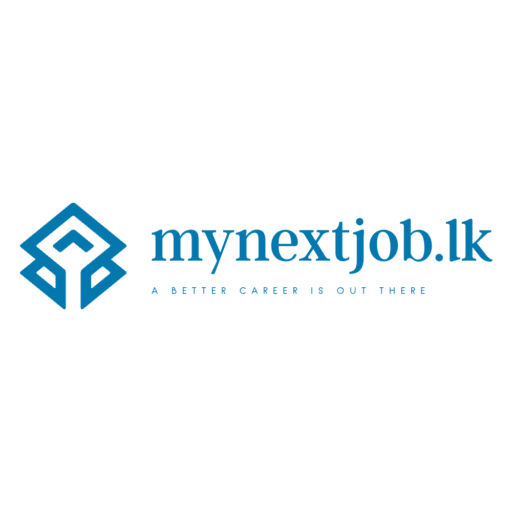Understanding the Importance of Employee Benefits
Employee benefits play a pivotal role in shaping the landscape of modern workplaces. These benefits are not only crucial for the well-being of employees but also provide significant advantages to employers. When implemented effectively, they can greatly enhance employee satisfaction, retention, and overall workplace morale.
For employees, benefits such as health insurance, retirement plans, and paid time off are fundamental components of a comprehensive compensation package. Health insurance, for instance, ensures that employees have access to necessary medical care, reducing stress and financial burden associated with medical issues. This, in turn, allows them to focus more effectively on their work. Similarly, retirement plans such as 401(k) or pension schemes provide security for the future, encouraging long-term commitment to the company.
Paid time off (PTO) is another critical benefit that contributes to a healthy work-life balance. By offering PTO, employers acknowledge the importance of rest and personal time, which can lead to improved productivity and lower burnout rates.
The importance of employee benefits is underscored by numerous studies. According to a 2020 survey by the Society for Human Resource Management (SHRM), 92% of employees consider employment benefits as crucial to their overall job satisfaction. Moreover, a study by Glassdoor found that nearly 80% of employees would prefer new or additional benefits over a pay increase.
Employers, on the other hand, benefit from offering comprehensive packages through increased loyalty and reduced turnover. A report by MetLife in 2021 indicated that organizations with a well-rounded employee benefits strategy experienced a 27% increase in employee retention. Additionally, these benefits serve as a critical tool for attracting top talent in a competitive job market.
By prioritizing employee benefits, companies demonstrate their commitment to the workforce, fostering a more motivated, engaged, and loyal employee base. This holistic approach to managing employee well-being leads to enhanced performance, contributing to the company’s long-term success and stability.
Types of Employee Benefits and Their Value
Employee benefits encompass a wide range of perks designed to address various aspects of employees’ lives and enhance their overall well-being and job satisfaction. Broadly speaking, these benefits can be categorized into health and wellness benefits, financial benefits, work-life balance perks, and career development opportunities. Each category serves a unique purpose and caters to the diverse needs and preferences of the workforce.
Health and Wellness Benefits: These benefits are fundamental because they directly impact employees’ physical and mental health. They often include medical, dental, and vision insurance, wellness programs, and gym memberships. The importance of these benefits cannot be understated as they contribute to lower absenteeism, increased productivity, and overall employee morale. Trends have seen companies like Google introducing on-site health services and comprehensive mental health support to create a healthier work environment.
Financial Benefits: Financial security is a significant concern for many employees, making this category crucial. Financial benefits typically include retirement plans, stock options, bonuses, and student loan repayment programs. These incentives not only help attract top talent but also retain them by ensuring financial stability. For instance, companies like Starbucks offer comprehensive tuition assistance programs, empowering employees through education and financial support.
Work-Life Balance Perks: Balancing professional and personal lives has emerged as a focal point in employment satisfaction. The perks in this category include flexible working hours, remote work, paid time off, and parental leave. With the recent shifts towards remote work due to global events, organizations like Slack have embraced permanent remote working policies, highlighting the trend towards greater flexibility and work-life integration.
Career Development Opportunities: Continuous learning and growth are vital in today’s rapidly evolving job market. Career development benefits involve training programs, mentorship, tuition reimbursement, and opportunities for advancement. Companies such as Amazon have implemented extensive training platforms, such as their Career Choice Program, encouraging upskilling and professional development for their employees.
Additionally, new trends in employee benefits focus on mental health support, flexible working arrangements, and family-friendly policies. For example, Microsoft has introduced comprehensive mental health care and extended family leave policies to support employees’ well-being holistically. These innovative benefits are instrumental in creating engaged, loyal, and productive workforces, ultimately driving organizational success.
Best Practices for Designing a Benefits Package
Creating a competitive and attractive benefits package requires a thorough understanding of various factors such as budget constraints, employee demographics, and industry standards. To begin with, it is essential to set a realistic budget that aligns with the company’s financial capacity while still offering meaningful benefits. This budget should serve as a guideline for selecting the types of benefits that can be provided.
Assessing the demographics of the workforce is another crucial step. The age, marital status, and lifestyle preferences of employees can greatly influence which benefits are most appealing. For example, younger employees might prioritize student loan repayment assistance, while older employees may value comprehensive health coverage or retirement planning options. Hence, tailoring the benefits package to fit the specific needs and preferences of the workforce can lead to higher satisfaction and engagement.
Industry benchmarks serve as a valuable reference point for gauging what your competitors are offering. By analyzing what similar organizations provide, companies can ensure their benefits remain competitive, thereby enhancing their ability to attract and retain top talent. Conducting regular employee surveys or focus groups can also uncover which benefits are most valued by your staff, allowing for informed decision-making that reflects their desires and needs.
Engaging benefits consultants or brokers can simplify the process of designing a benefits package. These experts bring specialized knowledge and experience, helping to negotiate better terms with vendors. They can provide insights into cost-effective solutions and emerging trends, ensuring the benefits offered are both innovative and practical. Negotiating with vendors is a critical part of this process; securing favorable terms can significantly enhance the value of the benefits provided.
Clarity and transparency in communication play a pivotal role in the effectiveness of a benefits package. Employees should be fully informed about the benefits available to them, including how to utilize them. Clear, concise, and thorough communication helps employees understand the full extent and utility of what is offered, thereby maximizing the perceived value and actual usage of the benefits.
Managing employee benefits is an ongoing process that requires regular evaluation and timely updates to ensure the offerings remain relevant and competitive. The first step in evaluating benefits programs involves gathering comprehensive employee feedback. Surveys, focus groups, and one-on-one interviews can be effective methods to understand employees’ needs and preferences. Analyzing this data helps identify gaps in the current benefits package and areas that require adjustment.
Measuring the effectiveness of existing benefits is another crucial aspect. Employers should assess metrics such as employee satisfaction, participation rates in benefit programs, and their overall impact on talent retention and productivity. Companies can also benchmark their benefits offerings against industry standards and competitors to understand where they stand in the market.
Staying informed about changes in regulations and market trends is vital to adapt benefits programs accordingly. Organizations need to continuously monitor legislative updates and industry best practices to ensure compliance and to capitalize on emerging trends. For instance, recent trends could include the increasing demand for mental health support or more flexible work arrangements, which should be reflected in the benefits offered.
Flexibility in benefits plans is essential to cater to the evolving needs and preferences of the workforce. Flexible benefits programs, such as cafeteria plans, allow employees to choose the benefits that best suit their individual circumstances. This approach not only increases employee satisfaction but also optimizes the employer’s investment in benefits.
Effective communication is key to implementing changes in benefits programs. Employers should ensure that any updates to benefits are clearly communicated to employees through multiple channels such as internal newsletters, informational sessions, and online portals. Maintaining transparency and providing detailed explanations about the rationale behind changes can help in managing employee expectations and engagement.
In conclusion, regularly assessing and updating employee benefits is essential to maintain a competitive edge and address the dynamic needs of the workforce. By leveraging employee feedback, staying informed about regulatory changes, and maintaining flexibility in benefits plans, companies can offer attractive and effective benefits programs that support their employees’ well-being and organizational goals.






